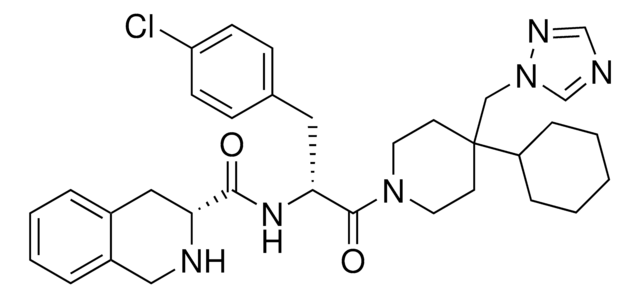SML0712
1-Methyl-1,2,3,4-tetrahydroisoquinoline
≥97% (GC)
Sinónimos:
1,2,3,4-Tetrahydro-1-methylisoquinoline, 1MeTIQ
About This Item
Productos recomendados
assay
≥97% (GC)
form
oil
color
, colorless to light yellow to light pink
storage temp.
2-8°C
InChI
1S/C10H13N/c1-8-10-5-3-2-4-9(10)6-7-11-8/h2-5,8,11H,6-7H2,1H3
InChI key
QPILYVQSKNWRDD-UHFFFAOYSA-N
Biochem/physiol Actions
Features and Benefits
signalword
Warning
hcodes
Hazard Classifications
Acute Tox. 4 Oral - Eye Irrit. 2 - Skin Irrit. 2 - STOT SE 3
target_organs
Respiratory system
Storage Class
13 - Non Combustible Solids
wgk_germany
WGK 3
flash_point_f
Not applicable
flash_point_c
Not applicable
Certificados de análisis (COA)
Busque Certificados de análisis (COA) introduciendo el número de lote del producto. Los números de lote se encuentran en la etiqueta del producto después de las palabras «Lot» o «Batch»
¿Ya tiene este producto?
Encuentre la documentación para los productos que ha comprado recientemente en la Biblioteca de documentos.
Artículos
Our company offers many products related to histamine synthesis and metabolism for your research needs.
Nuestro equipo de científicos tiene experiencia en todas las áreas de investigación: Ciencias de la vida, Ciencia de los materiales, Síntesis química, Cromatografía, Analítica y muchas otras.
Póngase en contacto con el Servicio técnico



![Octahydrocyclopenta[c]pyrrole AldrichCPR](/deepweb/assets/sigmaaldrich/product/structures/385/398/e59a3455-5fde-4e4a-a173-43297760be22/640/e59a3455-5fde-4e4a-a173-43297760be22.png)




